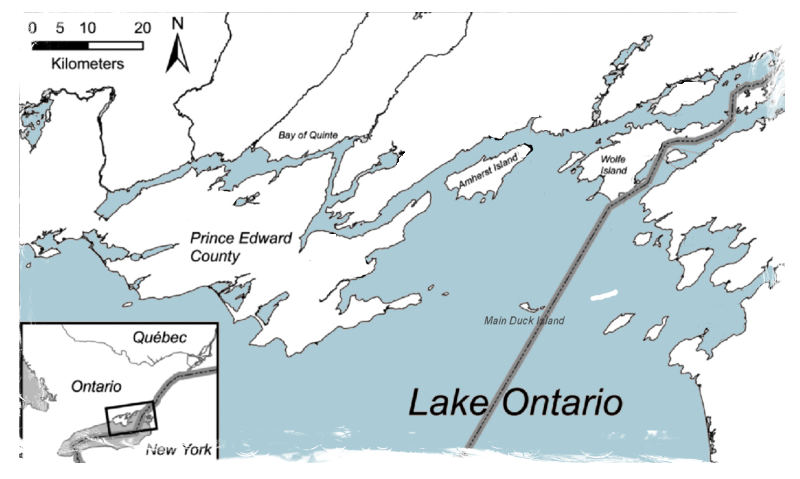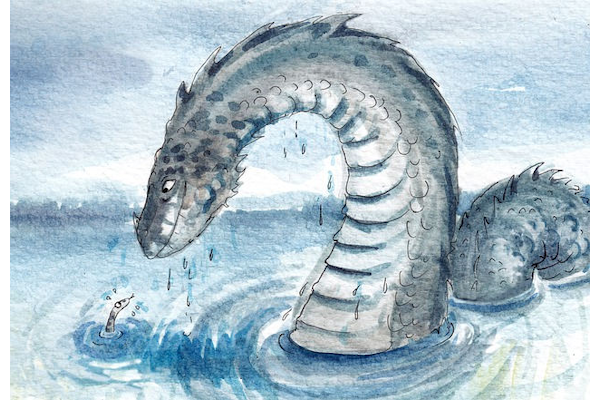Similar to ghost stories, the enchantment lies in their allure and thrill, as long as they remain in the realm of fantasy. Yet, the notion of colossal lake creatures harbouring an eerie reality can send shivers down one's spine. The Scottish Loch Ness Monster, the American Chessie, and the BC Ogopogo are some of the well-known names, but globally, over fifty lakes have witnessed hundreds of reported sightings. These aquatic cryptids, described across centuries and cultures, bear uncanny resemblances—elongated, snakelike forms with green, brown, or grayish skin, often topped by a head reminiscent of a horse or a dog.
Legends of gargantuan, scaly serpents in the Great Lakes trace back centuries, rooted in the beliefs of Algonquin and Iroquois people who regarded these creatures as nearly invincible. In the 1600s, French explorer Pierre Radisson chronicled his encounters with colossal snake-like beings in the Great Lakes in his diary. Since then, numerous accounts of massive lake serpents have continued to surface.
In 1805, four fishermen near Kingston mistook what they thought was an overturned rowboat for a horrifying encounter. As they approached, the boat transformed into a colossal snake, propelling them to paddle fervently towards shallow waters along the shore. Their dread only deepened as the serpent continued to glide, back and forth, seemingly watching their every move.

Eastern Lake Ontario is a hotspot for recurring colossal lake serpent sightings.
In 1833, the captain of the schooner Polyphemus recounted an astonishing tale of encountering a colossal serpent in the waters near Kingston. Described as dark blue with brown spots, stretching about 175 feet in length, the creature seemed poised to engage their vessel. Yet, it swam beneath the ship, its serpentine body undulating as it journeyed towards the mouth of the St. Lawrence River. For around 15 minutes, the crew and passengers bore witness to its retreat, its body submerged, and head above the water, moving with an almost mesmerizing rhythm.
Another schooner captain, in 1840, reported a peculiar sight while sailing past Main Duck Island — a "sound asleep" serpent, fifty feet long, dull brown with a dragon-like head, scales on its back, and a tail resembling a harpoon head. Having personally observed the plethora of water snakes inhabiting the island's rocky crevices, some growing to substantial sizes, this account makes me shudder!
In 1881, a boat on Eastern Lake Ontario encountered an "amphibious presence up to forty feet in length with a disproportionately large head." Later that year, the crew and passengers of the steamer Gypsy witnessed a snake-like creature measuring around twenty feet, gliding through the Rideau Canal.

Multiple sightings spanning several years in the vicinity of Kingston and the eastern basin of Lake Ontario earned the creature the moniker "Kingstie." The media caught wind of these reports in 1980, resulting in a newspaper headline that boldly proclaimed, "Long Live Kingstie!"
As fantastical as these accounts may seem, dismissing them outright poses a challenge. Marine biologists acknowledge that the vast size and depth of the Great Lakes continue to harbour mysteries within their murky depths. With certain species of prehistoric fish and reptiles having adapted and thrived in these waters for centuries, the question remains — could colossal serpents be part of this hidden tapestry, lurking just beneath the water's surface? Or are these monsters confined to the shadows of our imagination?
This story was featured in County Magazine Spring 2021 issue.

